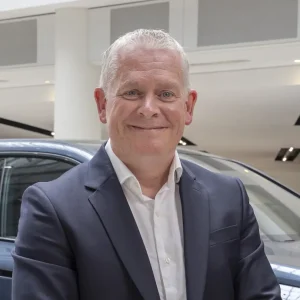Patching things up after one or more of your vehicles has had a shunt is part of the daily grind for fleet operators. Rudimentary though it may be, a lot of businesses get the wrong end of the stick with accident management, particularly those that outsource it, which, these days, is far from uncommon. It pays to reassess the basics of what your drivers and company vehicles really need before you put a tender together, regardless of whether it’s your first time contracting or you’re mulling over your current arrangement.
Settling on an accident management package requires a little sleuthing. Even if you’re among the growing number of professionals for whom fleet is a supplementary responsibility, the most important element of the tender and procurement process is questioning. You don’t necessarily need deep fleet knowledge; what you do need is to establish a concrete set of requirements.
“One of the things I always find quite surprising is the number of companies who just go out to a blind tender and effectively appoint somebody based on what they’re telling you on a piece of paper,” says Nick Williams, managing director of RAC accident management. “If you’re outsourcing, is it because you want a wider network to work with? Is it cost control? Is it downtime? Is it employee safety? Rather than just go to the market with an open chequebook, get quotes and go to whoever is the cheapest – which seems to be the buying factor in most instances – go to market with a defined set of goals.
“If I were the fleet manager, I’d want to be out trying to dig underneath the surface a bit, to understand what accident management companies are trying to sell me.”
To that end, Williams believes it’s worth grilling suitors with specific examples relevant to your fleet. “If I was running a fleet of 1,000 Caddy vans, I’d want to know what your experience was in that market,” he says. “I’d want to give you an example of three different accident scenarios, and I’d want you to tell me how you’re going to deal with that, how you’re going to engineer it, how you’re going to price it and the total cost.
“I would break it down so that I understood what parts are being used, what the labour content is and what the penalty content is, so that I get a good understanding of who’s pricing for what. Then, I think you get a good picture of those who are over-inflating cost to make sure that there’s a good margin in it. But I’d also be setting my targets and objectives to whoever I appointed around the cost they were indicating, and I’d want some sort of penalty clauses.”
Williams isn’t the only one to place homework above all when choosing an accident management provider. Marc Lafferty, chief revenue officer at Edam Group, is also an advocate of intense scrutiny.
“Make sure you understand what your priorities are in terms of the service you want delivered to your drivers, and what you’re prepared to pay,” he says. “Don’t just take a service at face value; check and make sure the driver experience is going to be right. Don’t forget that, when an accident happens, it is a very distressing and difficult situation for your drivers. Really, they want the best possible care and it’s probably not something to cut corners on.”
Lafferty is a firm believer that drivers are among the most important elements, as they’re the ones who will ultimately be on the receiving end of the service.
“At the forefront of my mind would be the experience that my driver got when something went wrong and that can cover a multitude of things: how quickly someone’s going to get in touch with them and how empathetic are they going to be?” he says. “How well will they deal with that query? How quickly will they get the right car to them, in the right place, so they’re on the road again? How effectively will they arrange for that vehicle to be repaired and how easy will it be to swap those cars back again?”
The driver issue runs deeper than the service, particularly for fleets with in-house accident management. If that’s the case, then the responsible party needs to be prepared to deal directly with employees and the post-shunt clean-up, which is where specialist expertise is worth having. Dave Bartlett, head of accident management at the AA, explains, “You’ve got to bear in mind that you’re dealing with a driver, and that driver’s potentially your colleague, and they could be particularly demanding and insist upon things that incur cost.
“That’s no criticism of these individuals, but if you have a driver who has a brand new car and they do £10,000 worth of damage to it in an accident – potentially enough to make that vehicle a write-off – and that in-house person is presented with an estimate from a repairer that details £10,000 worth of damage, does that individual have the true skill set to look at the estimate and say, ‘no, we’re not replacing that part, that part must be repaired,’ or ‘that part is structural, so it has to be replaced and not repaired’.
“We know that cars are more technical, more complicated to repair. If you don’t have those types of specialist individuals assessing your incidents, if you don’t have the supply chain in place where they can repair that vehicle properly, then all you’re going to do is incur cost to yourselves as an enterprise.”
That ability and willingness to dissect expenses is definitely something you should expect from a provider, due to the wildly variable nature of repair costs. Any company that doesn’t do it isn’t worth its salt.
“No two repairs are the same,” says FMG’s commercial director, Harvey Stead. “It’s not like taking 30 Vauxhall Astras and doing 30 10,000-mile services, where you can formulaically predict what the costs are going to be and how much time they’ll be off the road.”
Stead also says good providers will consider the minute logistics of vehicle downtime and the practicalities of getting back on the road.
“A commercial vehicle might be fully repaired, but the decals are going to take three days longer than we were initially told. Rather than have it in the workshop for three days, which is probably what an insurer would do, you get it back on road, then go and fit the decals at their place of work once they’ve arrived,” he says. “You’ve saved three days’ car-hire costs.”
Many contract-hire providers, particularly the larger ones, will throw in accident management for free or a relatively low extra cost, but the size and nature of your fleet will dictate the conversation you need to have. The RAC’s Williams explains, “What contract-hire firms are very good at is what they call a ‘vanilla solution’, which is typically for the smaller end of the fleet market – anything under 500 vehicles – where, more often than not, that solution does fit what
they want.
“They tend to be comprehensively insured fleets, so you’re typically working with the insurer to get claims authorised. Costs are controlled quite well and, invariably, the leasing company will have some sort of mobility solution in place for replacing vehicles, so the downtime is quite
well controlled.
“If it strays over that magic 500 number, they tend to do something a little bit more personalised, because they tend to be the bigger workhorse or branded fleets, where they’re really looking for something a bit different. I don’t think there are that many leasing companies out there any more who do that one-size-fits-all solution. They’re not frightened of actually making something bespoke as well.”
The accident management industry is polarising in terms of the specific products it offers, so the good news is you don’t necessarily have to take a kill-all package if you only want a contractor to handle certain components. Again, this makes a good case for figuring out precisely what you want before a tender.
“What we’ve tried to do, and what a lot of the market is doing now, is almost segment every aspect of accident management and have each one as a stand-alone, modular service,” says Williams.
“We’ve got clients that we do the FNOL (first notification of loss) for, but we then put the claim into a network that they have an agreement with. Some want us to manage it through the process, others are happy to take that on themselves, and then we do the back-end administration for them. You can almost pick and choose what you want out of the service.”





